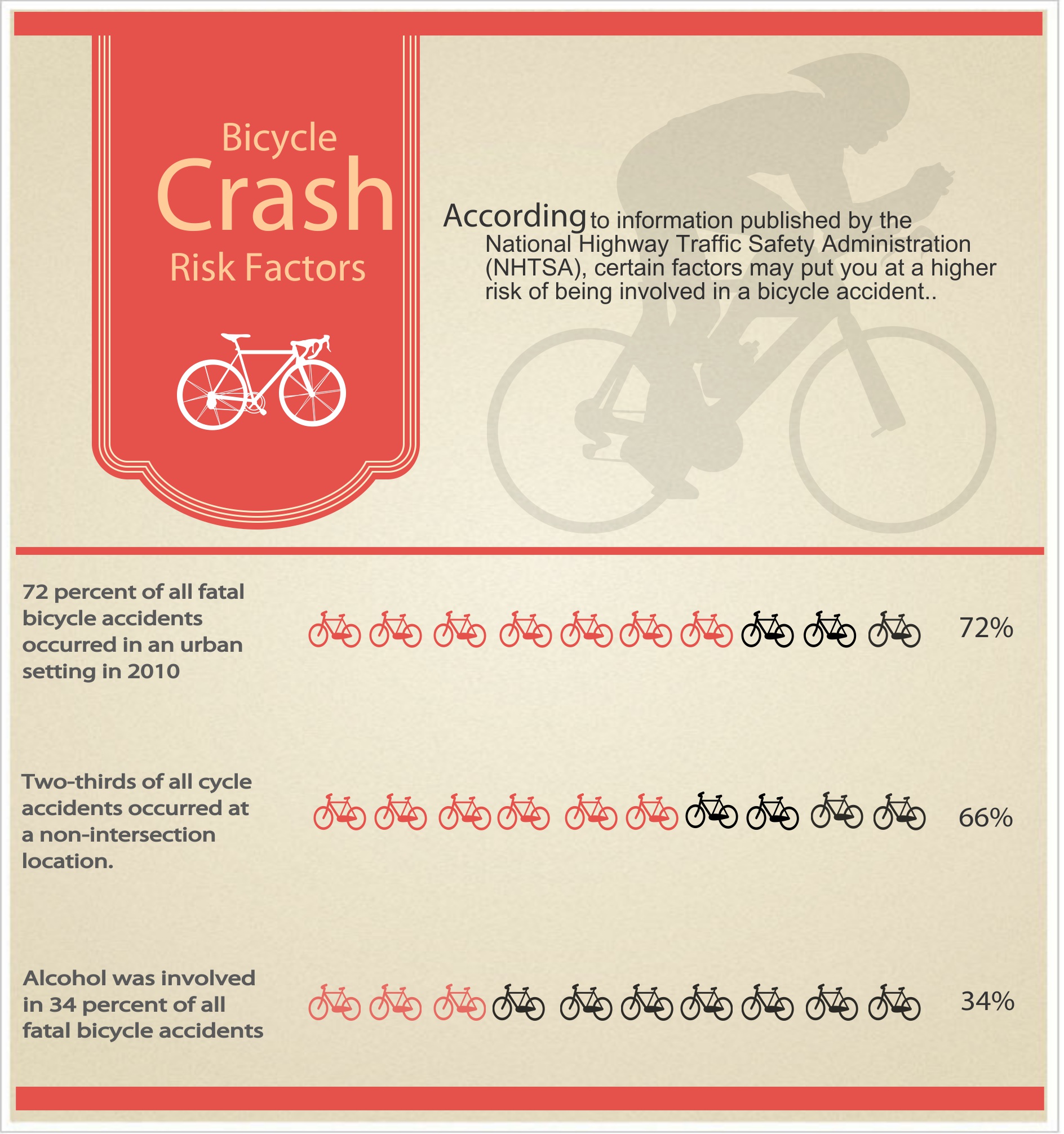Most people use a bicycle for more than just a fun or healthy activity. Bicycles are used as a means of transportation to commute to work, to meet up with a friend or to complete everyday tasks like getting something to eat.
People use bicycles year round; however with spring less than a month away, now is a good time to review bicycle safety. As the weather warms up more people will likely use bicycles to commute. Understanding safety tips, the rules of the road, as well as utilizing proper equipment can be important for all parties involved.
Safety First
Ensuring your bicycle is properly functioning is key whether you are a modest bicycle rider or it is a vital component of your daily transportation. Reducing the risk of injury or limiting any possible delays in your commute can be prevented by following these tips.
1.) Wear A Properly Fitted Bicycle Helmet
Wearing a helmet while riding a bicycle can help prevent injuries. However, wearing a helmet is not enough; the helmet should be properly fitted, adjusted and worn every time you decide to use a bicycle.
Place the helmet on top of your head, make sure it is flat and the helmet does not rock side to side. Some helmets come with extra sizing pads, which you can use to secure the helmet correctly on your head. The proper position of the helmet as mention by the NHTSA is one or two finger widths above your eyebrows and the helmet should be level. The chin strap should be tightened until it is snug fitting, allowing no more than one or two fingers to fit under the strap.
2.) Bicycle Preparation
Similar to properly fitting your helmet, the bicycle itself should also be adjusted to fit you correctly. Standing over your bicycle you should have about 1 to 2 inches between you and the top tube if it is a road bike or 3 to 4 inches if it is a mountain bike. When adjusting the seat confirm it remains flat and when riding there is a slight bend in your knee when the leg is extended fully.
Now that the bicycle is adjusted correctly, check that the equipment is in proper working function. The tires should be properly inflated to the recommended inflation level. The brakes should also be checked, assuring they are in proper working condition.
Preparing your bicycle and other equipment is an important factor when using a bicycle. Knowing the rules of the road is also an important factor so you can reduce the possibility of injury.
The Rules of the Road
- Stop at red lights and stop signs. Obeying the traffic signs is important when riding a bicycle especially in high traffic areas. By stopping at red lights and stop signs you allow yourself to scan for other traffic and prevent a crash from happening.
- Use hand signals when you are attempting to turn. By using hand signals they show those around you what your intention are. When turning left extend your left arm straight out horizontally. Using the Uniform Vehicle Code, when turning right extend your left upper-arm out to the left, horizontally and angle your forearm vertically upward. In the US it is also acceptable to extend your right arm straight out in the direction of the turn horizontally. In the United States, if you are stopping or braking, extend your left arm out to the left, horizontally and angle your forearm vertically downward.
- Make yourself visible. No matter what time of day or night you are riding a bicycle wear fluorescent, neon, or bright colors that reflect light, has flashing lights, or reflective tape/markings. Keep in mind that a driver may not see you even though you see them. Always assume that other drivers do not see you until you can assure they do. Making eye contact with the other drivers is important.
Safety Tips
Some safety tips that may help reduce the possibly of an accident or injury:
- Do not pass on the right: Other vehicles may not see or even be actively looking for a bicycle rider on the right side.
- Never ride with headphones: Wearing headphones while riding a bicycle can limit your hearing of the surrounding sounds.
- Scan the road behind you: Safely look over your shoulder or install a rear-view mirror on your bicycle so you can visualize the other vehicles behind you.
These are just some safety tips and rules when riding a bicycle. Please make sure you follow all traffic rules and regulations when riding. Also, knowing all the safety tips and implementing them can be beneficial to reducing the possibly of injury when riding a bicycle.
If you or a loved one has been seriously injured in a bicycle accident in New York or New Jersey, talk to the Ginarte law firm now so that justice can be served for you and your loved ones. Call 1-888-GINARTE (1-888-446-2783) now, fill out our online contact form, or visit one of our seven nearby offices in Newark, New York City, Union City, Elizabeth, Clifton or Perth Amboy today. Remember, there is no charge to talk with our accident lawyers and we collect fees only if you win your case!
Sources:
http://www.nhtsa.gov/people/injury/pedbimot/bike/KidsandBikeSafetyWeb/
http://www.nyc.gov/html/dot/html/bicyclists/biketips.shtml
http://www.wsdot.wa.gov/bike/safety.htm


Leave a Reply